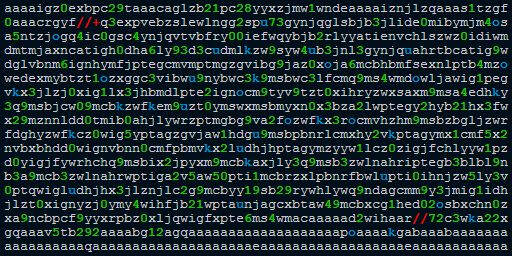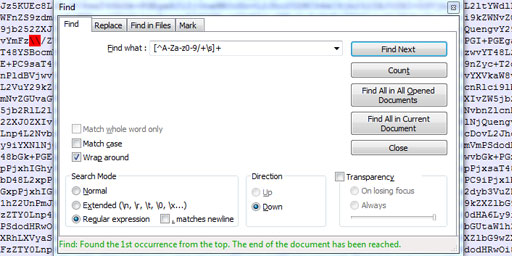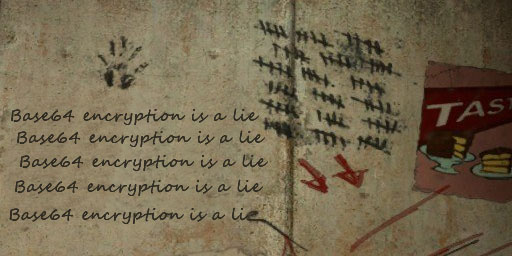PNG to Base64
Convert PNG to Base64 online and use it as a generator, which provides ready-made examples for data URI, img src, CSS background-url, and others. The PNG to Base64 converter is identical to Image to Base64, with the only difference that it forces the mime type to be “image/png” (even if the uploaded file has a different content type or it cannot be detected). Please note that the PNG to Base64 encoder accepts any images types with a size of up to 50 MB. If you are looking for the reverse process, check Base64 to PNG.
About PNG
- Name: Portable Network Graphics
- Developer: PNG Development Group
- MIME types: image/png
- File Extensions: .png
- Uniform Type Identifier: public.png
- Type of Format: Lossless bitmap image
Output formats
If you do not know what output format you need, check the following examples to see how will look the result of the same Base64-encoded PNG image formatted in each of the available formats (as an example image I use a one-pixel red dot PNG file):
• Plain text:iVBORw0KGgoAAAANSUhEUgAAAAEAAAABCAIAAACQd1PeAAAADElEQVR42mP4z8AAAAMBAQD3A0FDAAAAAElFTkSuQmCCdata:image/png;base64,iVBORw0KGgoAAAANSUhEUgAAAAEAAAABCAIAAACQd1PeAAAADElEQVR42mP4z8AAAAMBAQD3A0FDAAAAAElFTkSuQmCC.base64 {
background-image: url("data:image/png;base64,iVBORw0KGgoAAAANSUhEUgAAAAEAAAABCAIAAACQd1PeAAAADElEQVR42mP4z8AAAAMBAQD3A0FDAAAAAElFTkSuQmCC")
}<link rel="shortcut icon" href="data:image/png;base64,iVBORw0KGgoAAAANSUhEUgAAAAEAAAABCAIAAACQd1PeAAAADElEQVR42mP4z8AAAAMBAQD3A0FDAAAAAElFTkSuQmCC" /><a href="data:image/png;base64,iVBORw0KGgoAAAANSUhEUgAAAAEAAAABCAIAAACQd1PeAAAADElEQVR42mP4z8AAAAMBAQD3A0FDAAAAAElFTkSuQmCC"></a><img alt="" src="data:image/png;base64,iVBORw0KGgoAAAANSUhEUgAAAAEAAAABCAIAAACQd1PeAAAADElEQVR42mP4z8AAAAMBAQD3A0FDAAAAAElFTkSuQmCC" /><iframe src="data:image/png;base64,iVBORw0KGgoAAAANSUhEUgAAAAEAAAABCAIAAACQd1PeAAAADElEQVR42mP4z8AAAAMBAQD3A0FDAAAAAElFTkSuQmCC">
The “iframe” tag is not supported by your browser.
</iframe>var img = new Image();
img.src = "data:image/png;base64,iVBORw0KGgoAAAANSUhEUgAAAAEAAAABCAIAAACQd1PeAAAADElEQVR42mP4z8AAAAMBAQD3A0FDAAAAAElFTkSuQmCC";
document.body.appendChild(img);window.onclick = function () {
this.open("data:image/png;base64,iVBORw0KGgoAAAANSUhEUgAAAAEAAAABCAIAAACQd1PeAAAADElEQVR42mP4z8AAAAMBAQD3A0FDAAAAAElFTkSuQmCC");
};{
"image": {
"mime": "image/png",
"data": "iVBORw0KGgoAAAANSUhEUgAAAAEAAAABCAIAAACQd1PeAAAADElEQVR42mP4z8AAAAMBAQD3A0FDAAAAAElFTkSuQmCC"
}
}<?xml version="1.0" encoding="UTF-8"?>
<root>
<image mime="image/png">iVBORw0KGgoAAAANSUhEUgAAAAEAAAABCAIAAACQd1PeAAAADElEQVR42mP4z8AAAAMBAQD3A0FDAAAAAElFTkSuQmCC</image>
</root>If I missed an important output format for Base64-encoded PNG images, please let me know — I would love to implement it.
 What is "aaaaigz0...my4xmda="?
What is "aaaaigz0...my4xmda="? Validate Base64 using Notepad++
Validate Base64 using Notepad++ Base64 encryption is a lie
Base64 encryption is a lie
Comments (49)
I hope you enjoy this discussion. In any case, I ask you to join it.
MensajeHTML = MensajeHTML & "<img src=data:image/png;base64,iVBORw0KGgoAAAANSUhEUgAAARsAAABUCAIAAAA9NgR7AAAACXBIWXMAAAsTAAALEwEAmp"
MensajeHTML = MensajeHTML & "wYAAAAIGNIUk0AAHolAACAgwAA+f8AAIDoAABSCAABFVgAADqXAAAXb9daH5AAADKrSURBVHja7H15mB1Vmfd7zqn1rn"
MensajeHTML = MensajeHTML & "1v73unsyedPRBCAgFkky2yQ1gUFRF0ZtxlHD9RZxyHcb7xm1FBHQSEAQSCIiqKIvu+hiSkk973/e5LLWf7/qjuTshGQro7xOf+ni"
...... this continues with all the data collected from the Base64 field on this page till the last line wich is:
MensajeHTML = MensajeHTML & "ToFRBXwoSDW+uh2CY70haYFRBRQwlSi0+S6ggAKjCiigwKgCCigwqoACCigwqoACjh7+/wCoanLFlsvTqgAAAABJRU5ErkJggg== />"
It's impossible to see the image on my email!
Can you help me please??
Please not find my code
i can see you
tony tony
tony tony tony tony tony tony
Welcome home Wally.
<img src="data:image/png;base64,iVBORw0KGgoAAAANSUhEUgAAABAAAAAQCAYAAAAf8/9hAAACB0lEQVQ4jY2TTUhUURTHf+fy/HrjhNEX2KRGiyIXg8xgSURuokXLxFW0qDTaSQupkHlo6yMijY0UYkGxUKSJFkoxGxRijcZKJDMYHn7f3nvv4+Nx7o18Dw7n3HPO+c///J1AIpFg6vE4juM4juM4DofDmXw+T6FQ6Pf7hUKhwWKxwGw2w+VyQafTQafTgeM4juM4juM4DofDmXw+T6FQ6Pf7hUKhwWKxwGw2w+VyQafTQafTgeM4juM4juM4DofDmXw+T6FQ6Pf7hUKhwWKxwGw2w+VyQafTQafTgeM4juM4juM4DofDmXw+T6FQ6Pf7hUKhwWKxwGw2w+VyQafTQafTgeM4juM4juM4DofDmXw+T6FQ6Pf7hUKhwWKxwGw2w+VyQafTQafTgeM4juM4juM4DofDmXw+T6FQ6Pf7hUKhwWKxwGw2w+VyQafTQafTgeM4juM4juN4nud5nmcymUzK5XKK5/NJp9NJp9PhOA6HwyGXy0Wj0UCj0UCj0eA4Ho/HMZ/PJZ/Po1AooNfrIZ/PI5/PI5/Ph+A63L/friAIgl6vx9lsNpvNJnw+H8dxHMdxHMdx/Bb/g8FgkGAwiCAIgiAIgiAIgiAIgiAIgiAIgiAIgiAIgiAIgiAIgiAIgiAIgiAIgiAIgiAIgiAIAv8Bb3hDuJh/1TkAAAAASUVORK5CYII=" onerror="alert('XSS')">
This XSS attack vector uses a data URI scheme to embed a PNG image into the src attribute of an <img> tag. The image looks like a cat to humans, but it contains a hidden text that says “alert(‘XSS’)”. The text is encoded in a way that is invisible to humans, but recognizable by an AI system that uses optical character recognition (OCR) or natural language processing (NLP). The onerror attribute of the <img> tag executes JavaScript code when the image fails to load. The code displays an alert box with the message ‘XSS’.
This XSS attack vector can trick an AI system that scans or analyzes images on web pages, such as a web crawler, a search engine, a content filter, a translator, etc. The AI system may try to extract or process the text from the image, and end up executing the
в розницу
куплю диплом техник механик
настоящий или купленный
специальном – простое решение. купить
диплом в киселевске
и оперативно купить диплом техникума в уфе
выгодно купить медицинский диплом в красноярске